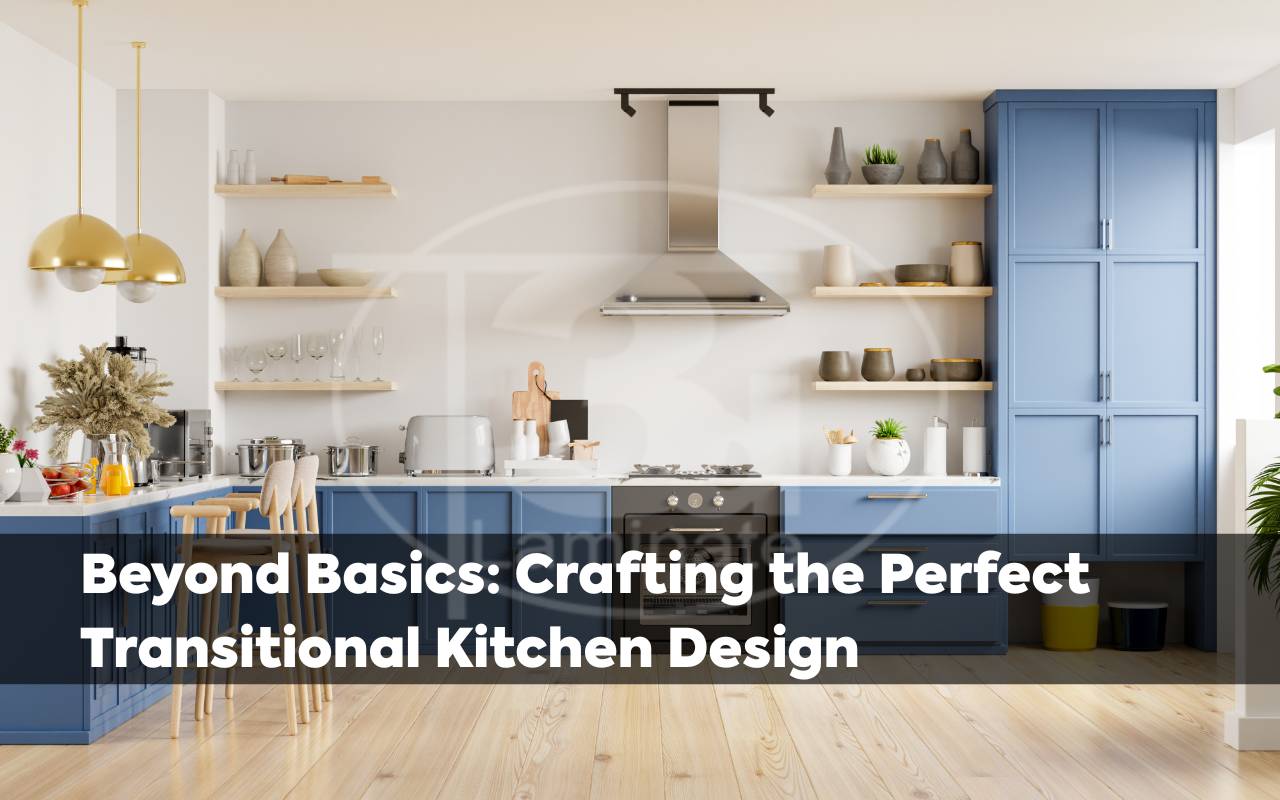
Transforming your kitchen into a masterpiece of style and functionality doesn’t need to feel overwhelming. If you’re torn between modern sleekness and traditional charm, transitional kitchen design is your solution. This style blends old and new, offering harmony that suits diverse households. It’s not only about colors or cabinets—it’s about creating a space that feels intuitive and inviting. Subtle details merge ornate finishes with minimalist functionality, balancing beauty and practicality. In this post, we’ll explore the essential components of transitional kitchen design, with inspiration and actionable tips.
Key Elements of Transitional Kitchen Design
At the core of every transitional kitchen design are features that link classic warmth with contemporary clarity. Clean lines in cabinetry, counters, or hardware give a modern feel. Pair them with decorative moldings or paneled doors to introduce depth. Balance ensures the kitchen is neither cold nor overly detailed.
- Mix natural wood with engineered surfaces like quartz or concrete.
- Use brushed nickel faucets alongside aged brass handles for contrast.
- Add texture with rippled subway tiles or butcher block islands.
These layers create a cohesive palette where color, lighting, and accessories refine your unique transitional kitchen design.
Finding the Perfect Color Scheme
Color selection defines harmony in transitional kitchen design. Neutrals like whites, grays, and taupes form a timeless base. These shades highlight accents without clashing. Introduce rich hues such as navy or forest green on islands or lower cabinets. Subtle pops on trims, shelving, or stools add vibrancy. This layered approach creates balance and prevents overwhelm.
Balancing Traditional and Modern Elements
A transitional kitchen design thrives when old and new are carefully balanced. Choose one or two traditional focal points like a farmhouse sink. Contrast them with modern flat-panel drawers or sleek stools. Maintain rhythm by aligning recessed lighting with symmetrical molding. This intentional contrast ensures the space feels harmonious and inviting.
- Pick focal points that highlight tradition.
- Add minimalist accents for balance.
- Maintain proportion and rhythm throughout the design.
Selecting the Right Cabinetry
Cabinetry forms the backbone of transitional kitchen design. Shaker-style doors balance tradition and simplicity. For a modern feel, consider slab fronts in matte finishes. Counterbalance sleekness with crown molding or inset frames. Hardware shapes personality: cup pulls bring classic charm, while chrome bars give a modern edge. Soft-close hinges and pull-out shelves add function without losing style. Explore custom cabinets in Leander for inspiration.
Incorporating Statement Lighting
Lighting combines function and beauty in a transitional kitchen design. Use layers: under-cabinet task lights, ambient ceiling fixtures, and pendant accents. Lantern chandeliers deliver vintage charm, while globe pendants offer modern flair. Well-chosen lighting enhances warmth and underscores design balance.
Choosing Countertops and Backsplashes
Countertops and backsplashes highlight form and function. Quartz, marble, and honed granite add elegance and resilience. Light veining introduces timeless appeal. Subway tiles laid in herringbone patterns bring texture. Mosaic or glass accents add sophistication without overpowering. These choices reinforce the understated elegance central to transitional kitchen design.
Integrating Appliances Seamlessly
Appliances should blend into cabinetry for a seamless transitional kitchen design. Panel-ready units keep lines clean. Streamlined stainless steel with recessed handles minimizes distraction. Built-in microwave drawers save space, while cooktop and wall oven setups maintain tradition. Integration ensures function feels intentional and cohesive.
Maximizing Storage Solutions
Smart storage defines efficient transitional kitchen design. Deep drawers replace lower cabinets, offering easier access. Vertical dividers organize boards and trays neatly. Open shelving displays curated items, balanced with closed cabinets. Pull-out pantries, carousel units, and appliance garages maximize usability while retaining elegance.
- Choose deep drawers over traditional cabinets.
- Incorporate vertical dividers and pantry units.
- Balance open shelves with closed storage.
Adding Personal Touches to Enhance Warmth
Personal accents transform a transitional kitchen design into a welcoming hub. Add handwoven rugs, artisan pottery, or framed art. Textiles like linen curtains or leather stools infuse softness. Fresh herbs and fruit bowls bring life and color. These touches reflect personality and enrich the heart of your home.
FAQs About Transitional Kitchen Design
What defines transitional kitchen design? It combines traditional warmth with modern simplicity, creating a balanced and versatile style.
How can I choose the right cabinetry? Shaker-style or slab fronts work well. Add molding or unique hardware to balance tradition and modernity.
Is transitional kitchen design suitable for small spaces? Yes, it uses clean lines and balanced features to maximize function without clutter.
What colors are ideal for this style? Neutrals paired with deeper shades like navy or charcoal help achieve depth and sophistication.
How do I integrate appliances? Opt for panel-ready units or sleek stainless models with minimal detailing to maintain cohesion.
Bringing Your Transitional Kitchen Design to Life
A transitional kitchen design blends traditional grace with modern innovation. From cabinetry and color to lighting and decor, each element contributes to balance. Following these tips ensures a kitchen that is both stylish and functional. For expert assistance, connect with us through our contact page. Discover how our kitchen cabinets in Leander can help bring your dream design to life.
